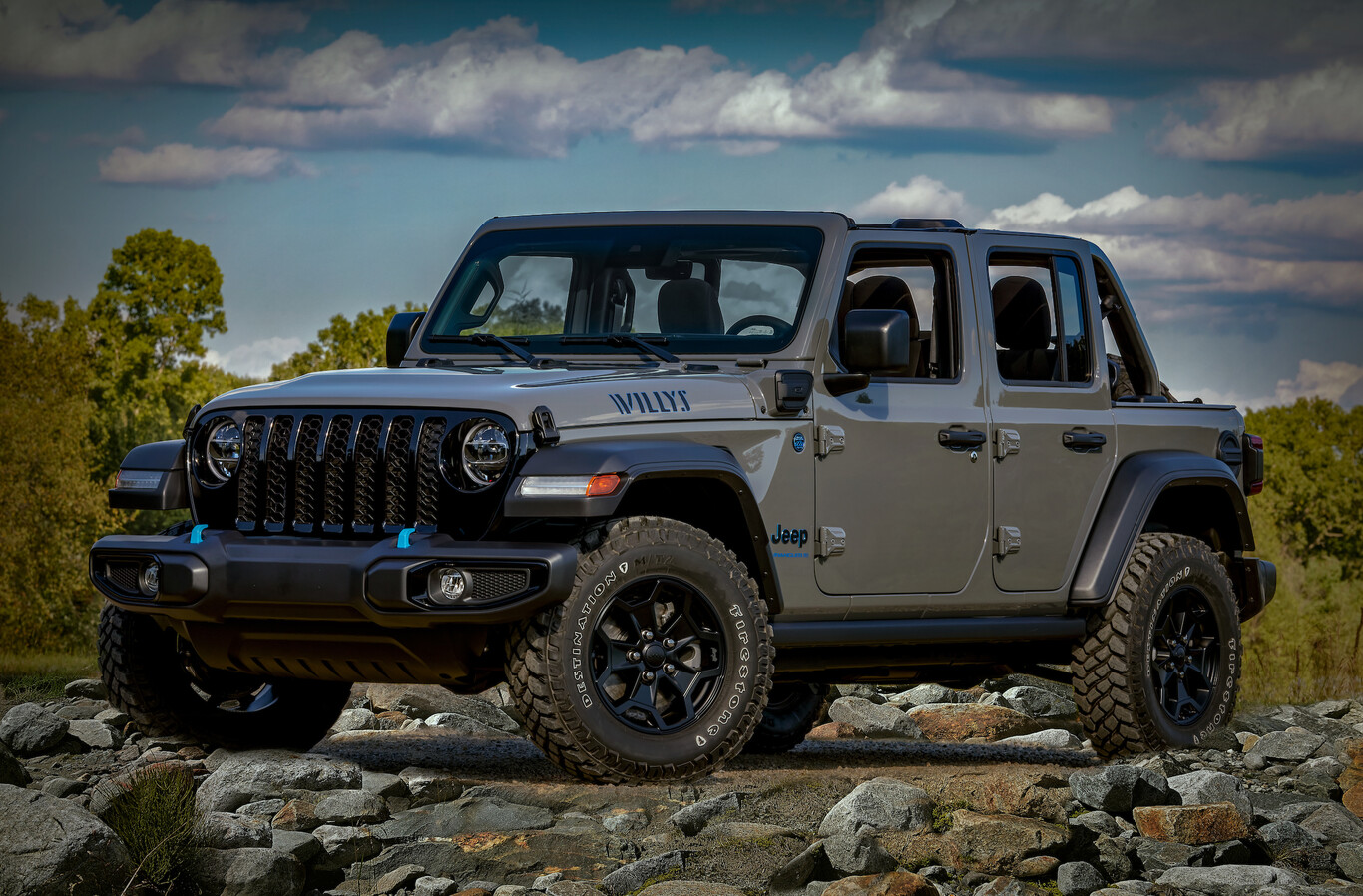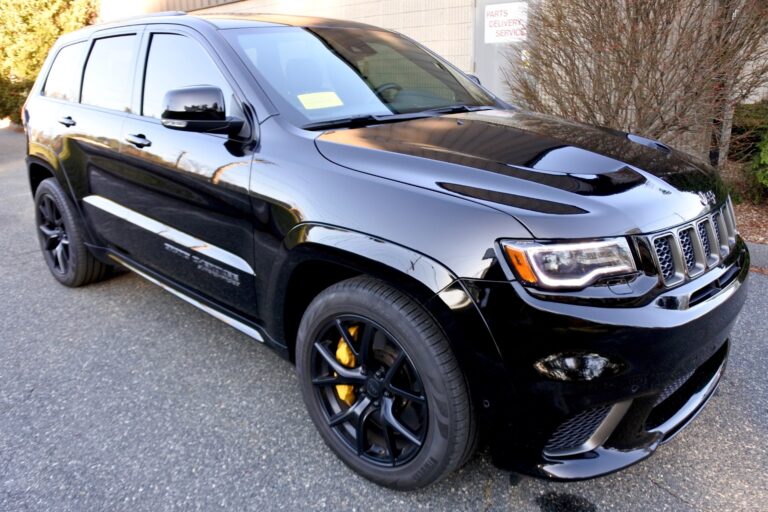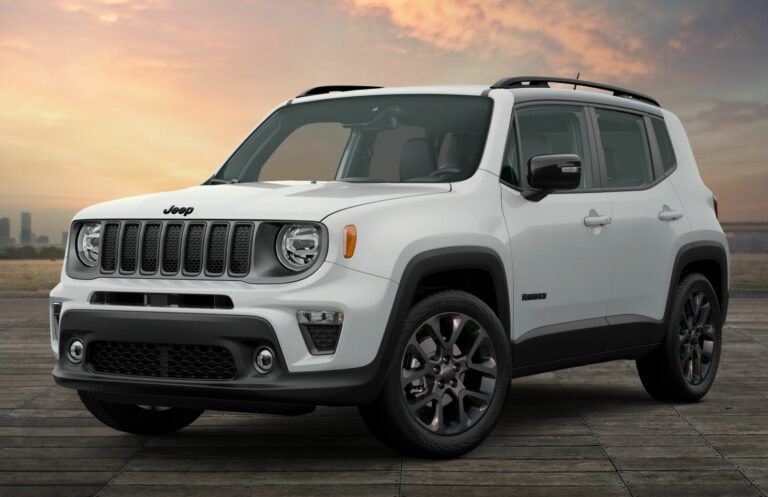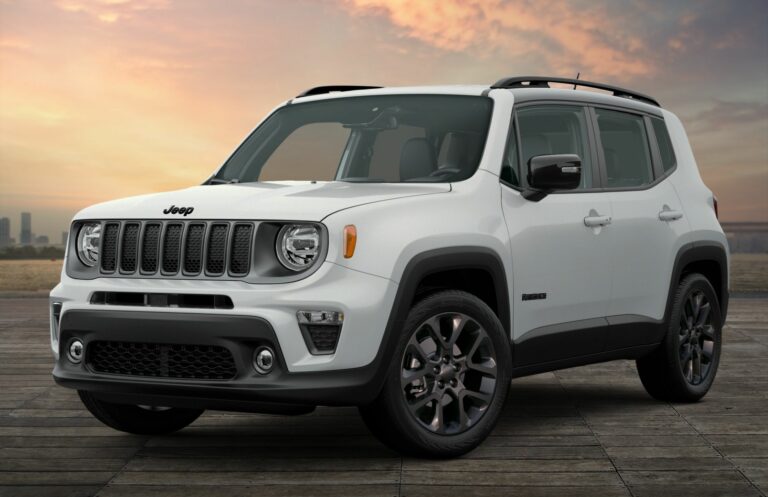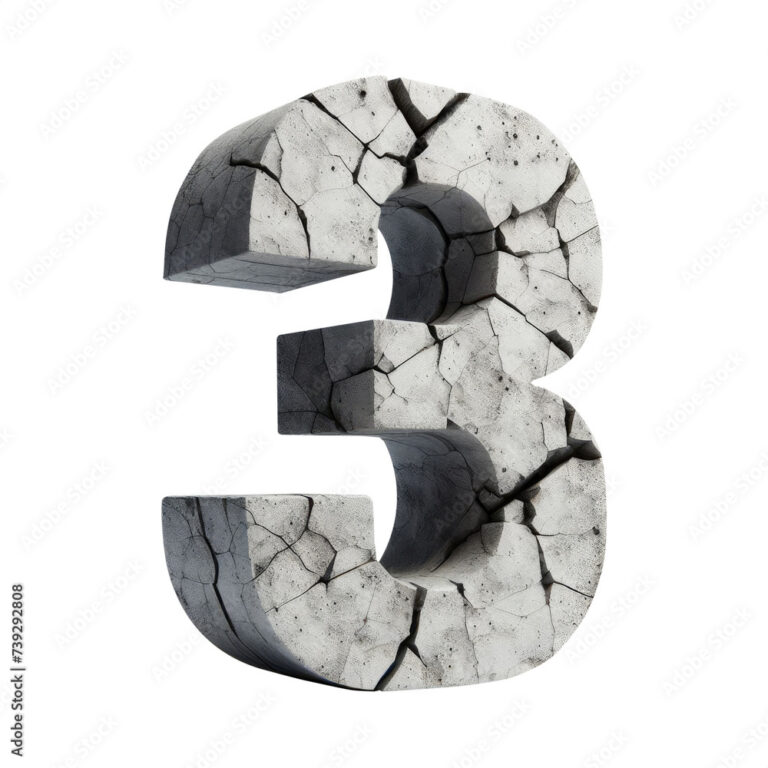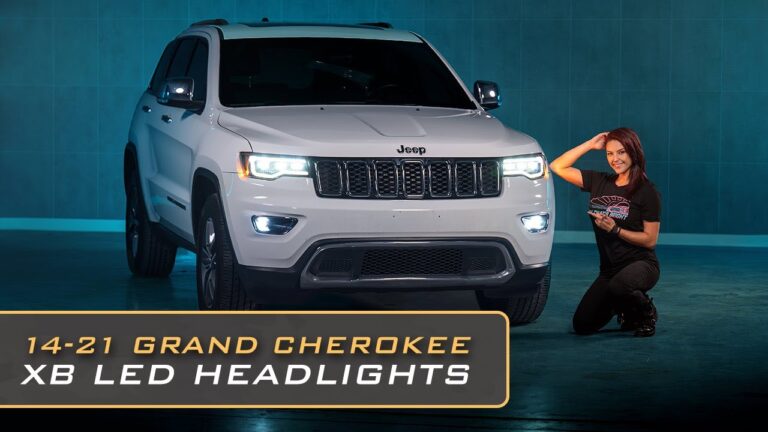Jeep XJ Rock Crawler For Sale: Your Ultimate Guide to Off-Road Dominance
Jeep XJ Rock Crawler For Sale: Your Ultimate Guide to Off-Road Dominance jeeps.truckstrend.com
The iconic Jeep Cherokee (XJ) holds a legendary status in the off-road world, particularly when transformed into a dedicated rock crawler. For enthusiasts seeking to conquer the most challenging terrains, a purpose-built XJ rock crawler represents the pinnacle of compact off-road performance. This article serves as a comprehensive guide for anyone looking to enter the thrilling world of rock crawling by purchasing a pre-built Jeep XJ. We’ll delve into what makes the XJ so special, what to look for in a modified rig, the benefits of buying versus building, crucial considerations, and practical advice to ensure you make an informed and successful purchase.
Why the Jeep XJ Reigns Supreme in Rock Crawling
Jeep XJ Rock Crawler For Sale: Your Ultimate Guide to Off-Road Dominance
Introduced in 1984, the Jeep Cherokee (XJ) quickly became a sales sensation and, perhaps unexpectedly, a cornerstone of the off-road aftermarket. Its unibody construction, while initially a point of contention for traditionalists, proved to be remarkably strong and lightweight, offering a lower center of gravity than body-on-frame counterparts. Coupled with its relatively short wheelbase, solid front and rear axles (Dana 30/35, later Dana 44 in some rare models), and an abundance of aftermarket support, the XJ became the perfect canvas for extreme off-road modifications.
The XJ’s enduring popularity as a rock crawler stems from several key advantages:
- Compact Size: Its nimble dimensions allow it to navigate tight trails and squeeze through obstacles where larger rigs might struggle.
- Unibody Strength (When Reinforced): While stock unibody can flex, proper reinforcement with frame stiffeners and roll cages transforms it into a robust and rigid platform.
- Affordability: Compared to newer Jeeps, the initial purchase price of a stock XJ is significantly lower, leaving more budget for modifications.
- Vast Aftermarket Support: Almost every component of an XJ can be upgraded or replaced with heavy-duty aftermarket parts, from axles and suspension to engines and transmission.
- Simplicity: Its relatively simple mechanicals make it easier for home mechanics to work on and maintain.

These factors combine to create a vehicle that is not only highly capable but also a joy to wheel, offering a visceral connection to the trail that many modern, highly electronic vehicles lack.
Key Modifications to Look For in an XJ Rock Crawler
When considering a "Jeep XJ Rock Crawler For Sale," it’s crucial to understand the types of modifications that transform a stock SUV into a trail-devouring machine. Not all XJ builds are created equal, and the level of modification directly correlates with its capability and, often, its price.
1. Suspension System
![]()
This is arguably the most critical modification. Look for:
- Lift Height: Typically ranging from 4 to 8+ inches, achieved through long-arm kits that maintain proper suspension geometry and articulation. Short-arm lifts are cheaper but limit articulation.
- Long-Arm Kits: Essential for serious crawling, these use longer control arms to reduce control arm angles, improving ride quality, handling, and articulation.
- Shocks: High-quality, long-travel shocks (e.g., Bilstein, Fox, King) are vital for dampening and handling aggressive terrain. Some extreme builds may feature coilover conversions for ultimate tunability.
- Springs: Heavy-duty coil springs up front and leaf springs or a custom 4-link with coilovers in the rear.
- Sway Bar Disconnects: Allow for maximum articulation off-road while maintaining stability on the pavement.
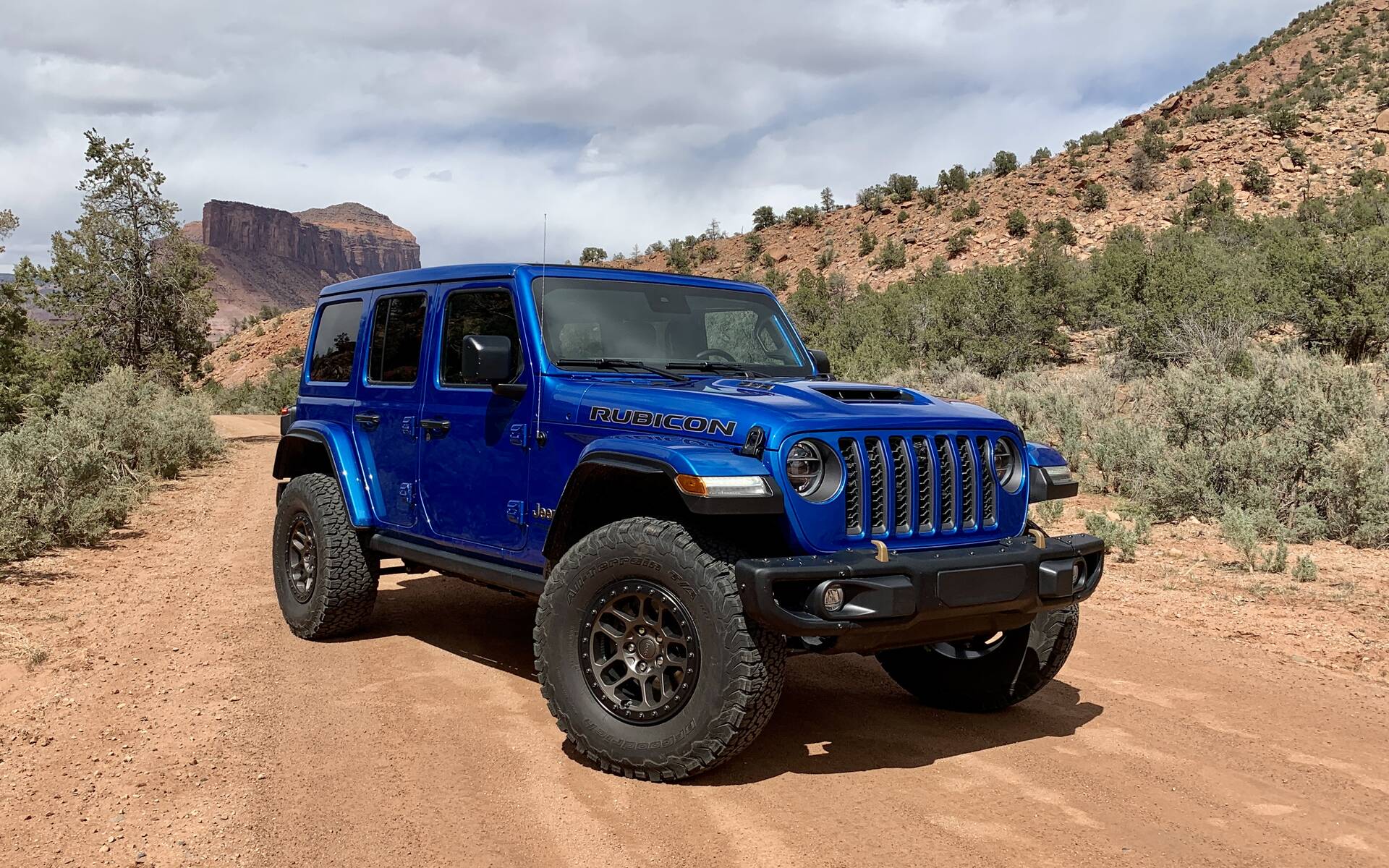
2. Axles and Drivetrain
The stock XJ axles (Dana 30 front, Dana 35 or 8.25 rear) are often the weakest links for serious crawling. Desirable upgrades include:
- Heavy-Duty Axles: Common swaps include Dana 44s, Ford 8.8s, or even 1-ton axles like Dana 60s or GM 14-bolts for extreme builds. These offer greater strength and larger ring and pinion sizes.
- Lockers: Essential for rock crawling, lockers (e.g., ARB air lockers, Detroit Lockers, spools) mechanically lock the differential, ensuring both wheels on an axle receive power equally.
- Gearing: Lower gear ratios (e.g., 4.56, 4.88, 5.13) are crucial to compensate for larger tires, restoring power and torque for crawling.
- Chromoly Axle Shafts: Stronger than stock shafts, reducing the likelihood of breakage.
- Transfer Case: The NP231 is common, often upgraded with a Slip Yoke Eliminator (SYE) to reduce driveshaft vibrations. For ultimate strength and low gearing, an Atlas II or Atlas IV transfer case is a premium upgrade.
3. Protection and Armor
Rock crawling involves contact with rocks and obstacles, making robust protection vital:
- Rock Sliders: Protect the unibody and rocker panels from impact.
- Heavy-Duty Bumpers: Steel front bumpers (often winch-ready) and rear bumpers provide protection and recovery points.
- Skid Plates: Protect vital components like the engine oil pan, transmission, transfer case, and fuel tank.
- Differential Covers: Thick, cast iron or fabricated covers protect the differential from impacts.
- Roll Cage: Internal or external cages provide crucial occupant protection and add significant unibody rigidity.
4. Tires and Wheels
- Tire Size: Typically 35 inches or larger, often 37s, 38s, or even 40+ inches for extreme builds. Larger tires provide more ground clearance and a larger contact patch.
- Tire Type: Aggressive mud-terrain (MT) or dedicated crawling tires with sticky compounds for maximum grip.
- Beadlock Wheels: Secure the tire bead to the rim, allowing the tire to be run at extremely low air pressures (e.g., 5-8 psi) for maximum traction without dismounting.
5. Steering System
Larger tires and extreme articulation put immense stress on the steering system:
- Heavy-Duty Steering Linkage: Upgraded tie rod and drag link (often 1.5-inch DOM tubing) are common.
- Over-the-Knuckle (OTK) Steering: Moves the steering linkage above the steering knuckle, increasing ground clearance.
- Steering Box Brace: Reinforces the steering box mount, preventing frame cracks.
- Hydro Assist Steering: Uses hydraulic pressure to assist the steering box, making it easier to turn large tires, especially when locked.
6. Other Common Upgrades
- Winch: Essential for self-recovery or helping others.
- Onboard Air: For airing up tires after a trail or running air tools.
- Upgraded Cooling System: Larger radiator, electric fans, and transmission coolers are common to prevent overheating.
- Aftermarket Seats: Provide better support and comfort during aggressive driving.
- Lighting: LED light bars and rock lights improve visibility on the trail.
The Benefits of Buying a Pre-Built XJ Rock Crawler
While the idea of building your own XJ from scratch is appealing, purchasing a pre-built rig offers significant advantages:
- Time Savings: Building a dedicated rock crawler is a monumental task, often taking months or even years. Buying pre-built means you can hit the trails almost immediately.
- Cost Efficiency (Potentially): While the sticker price might seem high, the cost of parts alone for a serious build can quickly exceed the sale price of a pre-built rig. Factor in countless hours of labor, specialized tools, and unforeseen challenges, and buying pre-built can often be the more economical choice.
- Proven Performance: A well-built, trail-tested rig has often had its kinks worked out by the previous owner, offering a more reliable starting point.
- Expertise Inherited: You benefit from the previous owner’s knowledge, experience, and component choices, often avoiding common pitfalls.
- Immediate Gratification: No waiting for parts, no greasy hands for months – just pure off-road adventure.
Important Considerations When Buying an XJ Rock Crawler
Purchasing a highly modified vehicle requires careful consideration to ensure you get a rig that matches your needs and expectations.
- Define Your Intended Use: Are you looking for a mild trail rig, a serious weekend crawler, or a competition-ready machine? The level of modification should align with your desired trails and skill level.
- Budget Realistically: Prices for XJ rock crawlers vary wildly based on the quality and extent of modifications. Be prepared for a range from a few thousand dollars for a basic build to $20,000+ for an extreme, highly capable rig.
- Inspect Thoroughly (Beyond the Shine):
- Rust: XJs are prone to rust, especially in the rocker panels, floorboards, and unibody frame rails. Check thoroughly, as rust can compromise structural integrity.
- Build Quality: Examine welds, wiring, and plumbing. Are they clean and professional, or do they look like a backyard hack job? Sloppy work indicates potential future problems.
- Component Matching: Do the components work together harmoniously (e.g., proper gearing for tire size, appropriate axle strength for power)?
- Drivetrain Health: Check for fluid leaks (engine, transmission, transfer case, axles). Listen for unusual noises during a test drive (clunks, grinding, whining).
- Steering & Suspension: Look for excessive play in steering components. Check for worn bushings, bent control arms, or damaged shocks.
- Road Legality & Title Status: If you plan to drive it on public roads, ensure it’s legally registered and inspect for modifications that might violate local laws (e.g., tire coverage, fender flares, exhaust noise). Always verify the title is clean and matches the VIN.
- Interview the Seller: Ask detailed questions about the build process, the history of the vehicle, maintenance records, and why they are selling. A knowledgeable and honest seller is a good sign.
- Get a Pre-Purchase Inspection: If possible, have a reputable off-road shop or a knowledgeable friend inspect the vehicle. They can spot issues you might miss.
Where to Find Jeep XJ Rock Crawlers for Sale
- Online Marketplaces: Facebook Marketplace, Craigslist, and eBay Motors are popular platforms. Be wary of scams and always inspect in person.
- Dedicated Off-Road Forums & Groups: Websites like NAXJA (North American XJ Association), Cherokee Forum, and various Facebook groups dedicated to XJ owners often have "for sale" sections. These communities can also offer valuable advice.
- Specialized Off-Road Dealerships/Shops: Some shops that specialize in building off-road vehicles might have used builds for sale.
- Word of Mouth: Networking within local off-road clubs or communities can lead to finding private sales.
Tips for a Successful Purchase
- Be Patient: The right rig might not appear overnight. Don’t rush into a purchase.
- Do Your Homework: Research common XJ issues, understand different modification types, and know what you want before you start looking.
- Bring a Friend: A second set of eyes, especially someone knowledgeable about off-road vehicles, can be invaluable during inspection.
- Factor in Post-Purchase Work: Even the best pre-built rigs might need minor tweaks, maintenance, or personalization. Budget accordingly.
- Negotiate Respectfully: Be prepared to negotiate, but also be realistic about the value of the modifications.
Challenges and Solutions
- Hidden Issues: Solution: Thorough pre-purchase inspection, asking detailed questions, and requesting maintenance records.
- Over-Built for Your Needs: Solution: Clearly define your intended use and choose a rig that matches your skill level and local trails. Don’t buy a competition rig if you only plan on light trails.
- Lack of Documentation: Solution: Ask the seller if they have a build sheet, receipts for major components, or a log of maintenance.
- Transportation: Highly modified XJs, especially those on large tires, may not be street legal or comfortable for long distances. Solution: Plan for trailering the vehicle home.
Table Price: Estimated Range for Jeep XJ Rock Crawlers For Sale
It’s important to note that these are broad estimates. The actual price will depend heavily on the quality of components, the level of professional labor, and the overall condition of the vehicle.
| Category | Estimated Price Range (USD) | Key Features/Modifications |
|---|---|---|
| Mild Build | $5,000 – $10,000 | Typically 3-4.5" lift, 31-33" tires, basic armor (rock sliders, bumpers), possibly stock axles with lockers or minor upgrades. Good entry-level trail rig for moderate terrain. |
| Moderate Build | $10,000 – $20,000 | 4.5-6.5" long arm lift, 35-37" tires, upgraded axles (e.g., Dana 44s, Ford 8.8) with lockers and re-gearing, comprehensive armor (skid plates, heavy-duty diff covers), upgraded steering, winch. Capable of tackling challenging rock crawling trails. |
| Extreme Build | $20,000 – $40,000+ | 6.5"+ custom long arm/4-link suspension, often with coilover conversions, 37-40+" tires on beadlocks, 1-ton axles (e.g., Dana 60, 14-bolt) with full lockers and custom gearing, full internal/external roll cage, hydraulic steering, Atlas transfer case, engine/transmission swaps. Competition-ready or built for the most extreme trails. |
| Donor Vehicle (Stock XJ) | $1,500 – $5,000 | For those looking to build from the ground up. Price varies based on year, mileage, and condition. |
Note: The cost to build an extreme XJ rock crawler often significantly exceeds its resale value due to the high labor costs involved in custom fabrication and installation.
Frequently Asked Questions (FAQ) about Jeep XJ Rock Crawlers For Sale
Q1: Is an XJ a good platform for rock crawling?
A1: Absolutely! The Jeep XJ is considered one of the best and most popular platforms for rock crawling due to its compact size, unibody design (when reinforced), solid axles, and massive aftermarket support.
Q2: What are the most important modifications to look for in a pre-built XJ crawler?
A2: Key areas are a proper long-arm lift kit, heavy-duty axles with lockers and appropriate gearing for tire size, robust armor (sliders, bumpers, skid plates), and a strong steering system.
Q3: Are XJ rock crawlers street legal?
A3: It depends on the specific modifications and your local state or country laws. Many heavily modified XJs may not meet all road legality requirements (e.g., tire coverage, ride height, emissions). Always check local regulations.
Q4: Can I finance a modified Jeep XJ rock crawler?
A4: Traditional auto loans are often difficult to obtain for highly modified vehicles as they don’t fit standard valuation models. You may need a personal loan, an RV loan (if it’s registered as such), or pay with cash.
Q5: What’s the typical mileage on an XJ rock crawler for sale?
A5: XJs are older vehicles, so high mileage (150,000-250,000+ miles) is common on the chassis. The focus should be on the health of the engine, transmission, and most importantly, the condition and quality of the installed aftermarket components.
Q6: What should I budget for after buying a pre-built XJ rock crawler?
A6: Always budget for immediate maintenance (fluids, filters, spark plugs), potential minor repairs, and any personal customizations you want to make. Even well-built rigs may need a few tweaks to suit your driving style.
Q7: How important is a roll cage on an XJ rock crawler?
A7: Extremely important for serious rock crawling. A roll cage (internal or external) provides crucial occupant protection in the event of a rollover and significantly stiffens the XJ’s unibody chassis, improving performance and durability.
Conclusion
The allure of the Jeep XJ rock crawler is undeniable. Its combination of rugged capability, extensive aftermarket support, and the sheer joy of piloting a purpose-built machine makes it a top choice for off-road enthusiasts. By understanding the key modifications, carefully considering your needs, and performing a diligent inspection, you can successfully navigate the market for a "Jeep XJ Rock Crawler For Sale." Purchasing a pre-built rig offers a fantastic shortcut to hitting the trails, allowing you to bypass the extensive time and often higher cost of a ground-up build. With the right XJ, you’re not just buying a vehicle; you’re investing in countless adventures and joining a vibrant community of passionate off-roaders. Get ready to conquer obstacles and create unforgettable memories on the rocks.
